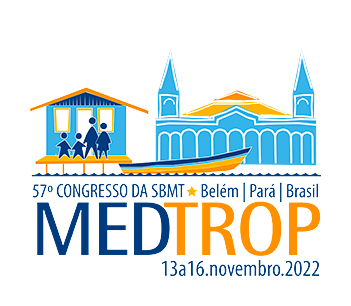Dados do Trabalho
Título
Evaluation of different liquid media for an improved revival of decades-old Yersinia pestis cultures from an unique bacterial collection in Brazil
Introdução
Yersinia pestis is the causative agent of plague, a rodent zoonosis that affects humans and other mammals and is endemic in many countries in Africa, Asia, the former Soviet Union and the Americas. The Brazilian National Plague Reference Service (SRP) maintains a unique collection of cultures of Y. pestis isolated from human, rodent and flea cases in different Brazilian foci since 1966. In a preliminary study to evaluate the viability of the subcultures of the Fiocruz-CYP collection, currently kept in peptone agar tubes under refrigeration, it was observed that the recovery rates in blood agar base and brain heart infusion were relatively low, with the frequent presence of contaminating fungi or bacterium.
Objetivo(s)
We sought to develop a simple method to prepare a highly selective LB-based medium, suitable for recovering long-term stored Y. pestis cultures.
Material e Métodos
The media here evaluated aimed to inhibit the growth contaminating microorganisms and enrich Y. pestis growth through iron supplementation. Different vials of contaminated Y. pestis cultures were inoculated in 3mL of each of the following culture media: LB broth without additive; LB/Cefsulodine-Irgasan-Novobiocin; LB/nystatin; LB/CIN/nystatin and LB/CIN/nystatin/ferroxyamine E. The cultures were incubated at 28 °C and visually inspected for bacterial growth analysis after 72 and 120 hours. The presence and purity of Y. pestis colonies were confirmed by bacteriophage test and multiplex PCR.
Resultados e Conclusão
LB media without additive and LB/CIN allowed the growth of the control tubes containing Y. pestis, however it was not able to fully inhibit the growth of other bacteria and fungi in the contaminated tubes. LB/nystatin satisfactorily inhibited the growth of fungi, not interfering with the growth of Y. pestis or contaminating bacteria. LB/CIN/nystatin with and without ferroxyamine E satisfactorily inhibited the growth of contaminating bacteria and fungi, showing no interference with the growth of Y. pestis in the control tubes. The LB/CIN/nystatin with or without ferroxyamine E provides better growth of Y. pestis at 28 °C while satisfactorily inhibiting the evaluated contaminants, being used in the reactivation of the cultures of the Collection.
Palavras-chave
Yersinia pestis; plague; antimicrobials.
Área
Eixo 14 | Outros
Categoria
NÃO desejo concorrer ao Prêmio Jovem Pesquisador
Autores
Igor Vasconcelos Rocha, Matheus Filgueira Bezerra, Marise Sobreira, Nilma Cintra Leal, Alzira Maria Paiva de Almeida
